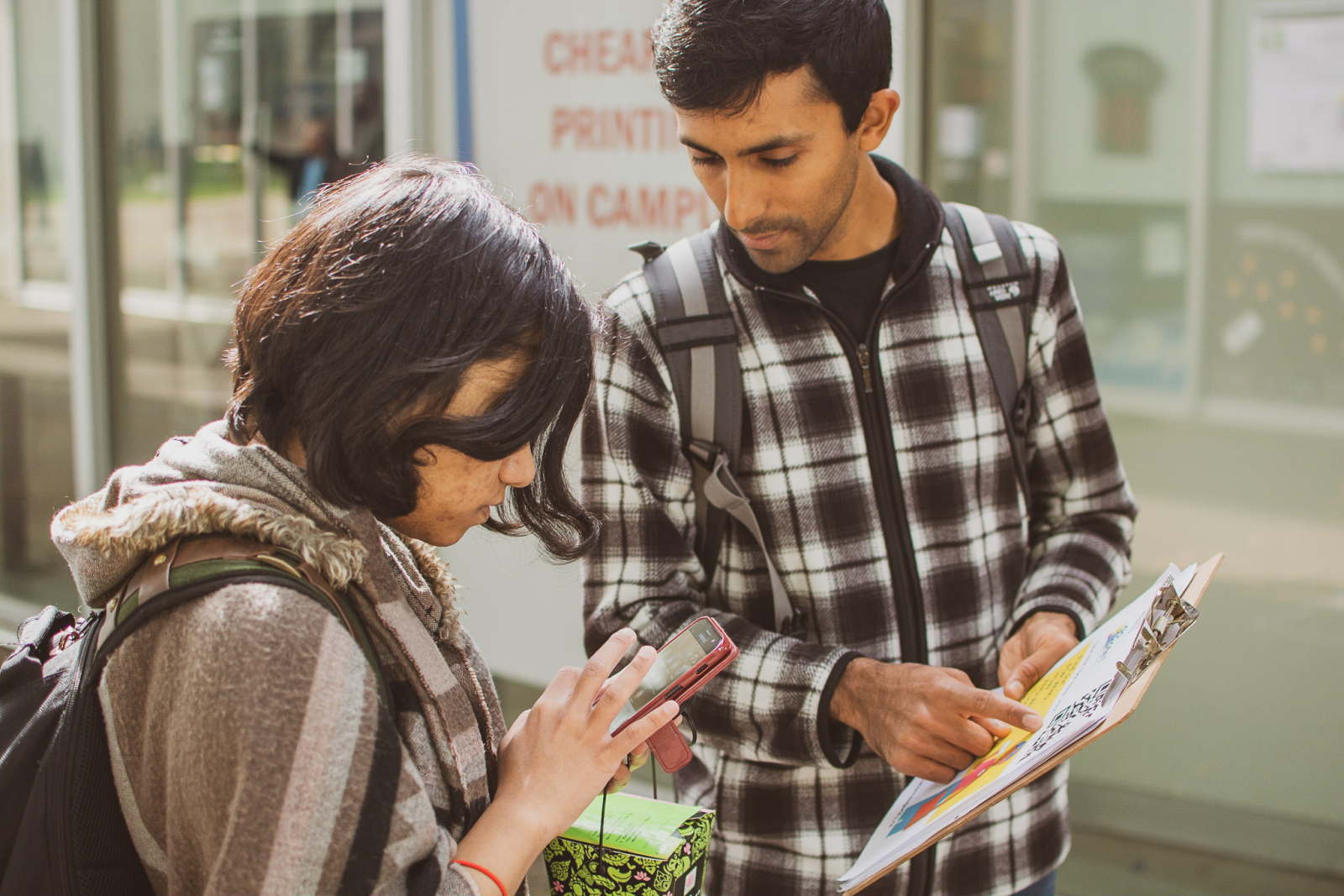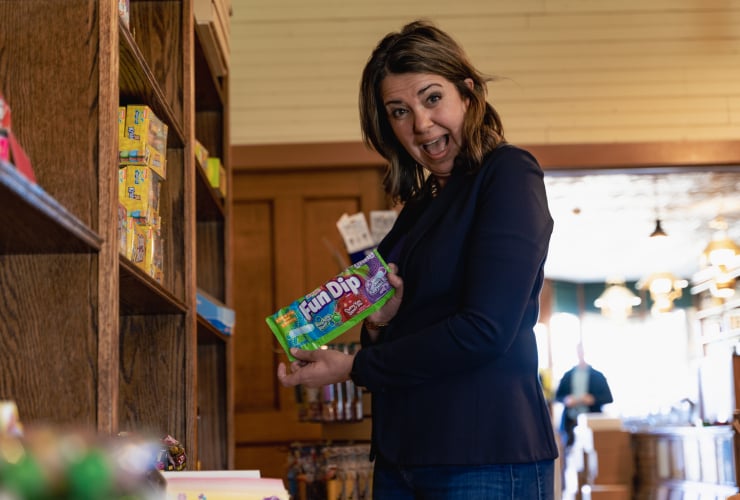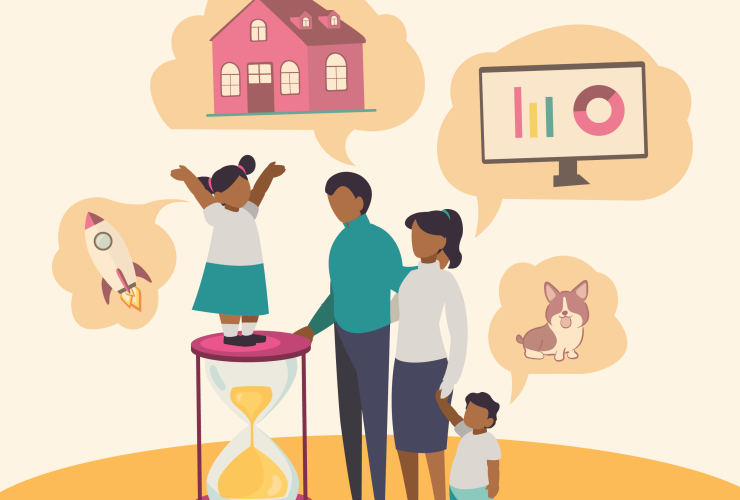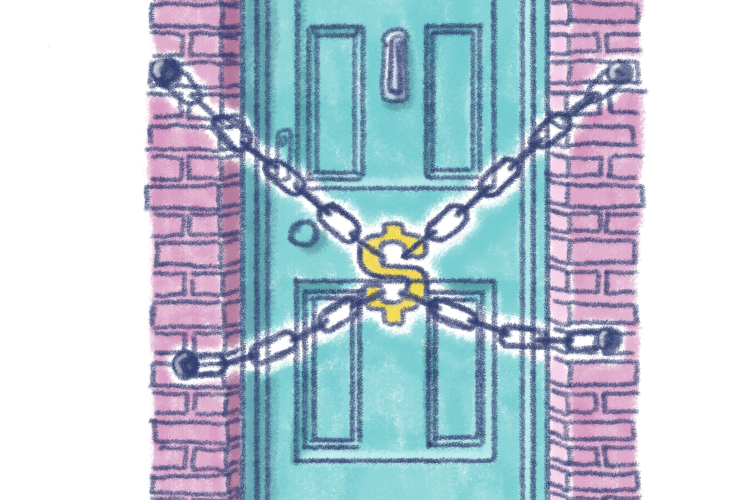Alberta’s provincial election on Monday is, by all metrics, too close to call.
According to this poll by Abacus Data, the United Conservative Party and the NDP are statistically tied.
There’s one age bracket where the split isn’t so even. Forty-nine per cent of Albertans under the age of 45 would vote for the NDP if the election were today, while 53 per cent over that age group said they would vote for the UCP. This divide is not the result of any deliberate strategy by either party, however.
Lars Hallstrom, a political scientist at the University of Lethbridge, said he hasn’t seen anything on either party’s platform that particularly targets young people.
“Should they play more of a role? Yes,” he said, “but based on previous voter turnout, I don’t see any reason to see a massive shift from previous elections. So the 18 to 24 year olds will probably be the lowest voting demographic.”
When asked what its party is doing to attract young people’s votes, the NDP responded with a statement saying it was doing more advertising on social media and platforms like Spotify than ever before. The NDP also said it is relying on candidates with large social media followings like Janis Irwin in Edmonton and candidates who are young professionals, like Denis Ram in Calgary.
The UCP did not respond to the same question. But in its platform, Leader Danielle Smith said, “United Conservatives are committed to growing the economy, attracting more skilled workers, and making Alberta more affordable so young people can see themselves staying and growing their families right here.”
Despite the fact they are less likely to vote than older age groups, Hallstrom said youth in Alberta, and across the country, are very engaged when it comes to discussing political issues.
“The challenge will be whether online and interpersonal engagement about politics is actually seen as a valid substitute for the act of voting.”
The federal picture
Voters across the country between the ages of 18 and 35 have the lowest turnout rate compared to other age groups. But that doesn’t mean young people are disengaged from politics. According to the 2019 report You Have Our Attention conducted by the Samara Centre for Democracy, a charity and research group in Toronto with the goal of improving Canada’s democracy, Canadians aged 18 to 29 consistently discuss politics more frequently than older people.
They are also most likely to take part in political activism, but their engagement just doesn’t translate to the polls.
Samantha Reusch, executive director of Apathy is Boring, said that while a lot of young people care deeply about issues, they “don’t really feel like taking part in an election is the best use of their power to move the needle on these political issues.”
Organizations like Future Majority and Apathy is Boring generally define youth as generation Z and millennials, meaning the oldest of the young people they target can be pushing 35. Elections Canada uses a slightly different age categorization, splitting people into nine-year sections.
The issues
Climate change. Affordability. Racial justice. Mental health. These are four issues experts say young people in Canada care about. Academics who study youth politics and work with young Canadians agree this is the case.
In the 2021 federal election, those four issues were represented in the major parties’ platforms, although in different ways.
When it came to climate change, for example, the Liberals promised, among other things, a 40 to 45 per cent reduction in emissions by 2030 and a net-zero emitting electricity system by 2035. The Conservatives focused mostly on carbon taxes, carbon trading and a zero-emission vehicle mandate. The NDP promised a 50 per cent reduction in emissions by 2030 and also talked about retrofitting every building in Canada to be low-emission by 2050.
On affordability, Liberals talked about raising the minimum wage Canada-wide, the Conservatives about oil pipelines and industry investment, while the NDP focused on social security programs and industry investment.
When it came to racial justice, the major parties' platforms were more of a mixed bag.
Liberals promised to tighten gun laws, crack down on online hate and reform the RCMP. Conservatives pledged to ban conversion therapy, provide money to women living in shelters with children and expand police presence in Toronto. The NDP promised to create hate-crime units in local police forces and reduce use-of-force by police across the country.
The non-voters
Apathy is Boring attempts to convince young Canadians that apathy is, in fact, boring.
“They just feel like nothing really changes and it doesn’t really matter who’s in power,” Reusch said. Her work looks for ways to persuade young people to vote — and to determine why some don’t.
She breaks those who don’t vote into two groups. The first includes people with access barriers; they believe they can’t take time off work, or don’t have child care, or own a car.
The second and larger portion of young non-voters are simply not motivated, Reusch said. Statements like, “Politicians don’t care about me. My voice doesn’t matter,” are common, she added.
Graphic summarizing reasons why those in the 18 to 24 and 25 to 34 age groups did not vote in the 2021 federal election.
The digital world

According to the report Message Not Delivered from the Samara Centre for Democracy, half of the people under the age of 30 in Canada — millennials and gen Z — have never been contacted by a political party, MP, or candidate.
Most young Canadians don’t own their own homes, so get passed over during door-to-door canvassing in neighbourhoods. Politicians and candidates need to meet them where they live and hang out, and that means online.
Young people in the United States are the main focus of study for Ellen Middaugh, assistant professor in child and adolescent development at San José State University, but she said her work can be applied to young people in Canada just as easily.
“Schools don’t do very much with media literacy in general,” she said, “and specifically not with social media.”
Given how much political discussion takes place online these days, understanding how that discussion influences young people and how they can best participate — or choose not to participate — informs how they interact with politics, civil society and with voting.
Middaugh said much of the news young people come across is incidental, meaning it comes across their newsfeed without them specifically seeking it out.
When Elections BC designed its most recent Get Out The Vote campaign for the 2020 election, it used Instagram to get messages out to young people, explains Andrew Watson, a representative of the organization.
In 2022, Elections Quebec ran a series of ads based on viral videos on TikTok.
Experts and youth volunteers agree that this kind of messaging is good for reaching young people.
Meshall Awan from Future Majority said that TikTok is effective for reaching youth and that Instagram was particularly useful for sharing infographics. Politicians can better reach young people by meeting them where they live and communicating information the same way they do, Awan said.
The solutions

Increasing youth voting is not a matter of convincing more young people that they should, as more young people become politically aware and start to see voting as the legitimate way to make a difference.
In many places, like the United States, youth voting is on the rise and has been instrumental in changing the political playing field. In the U.S.’s most recent midterm election, the votes from everyone under the age of 30 cancelled out those of everyone over the age of 65.
It’s a matter of making the process as easy and convenient as possible and letting young people know how to do it. Part of that can be accomplished by civic education, as well as teaching young people everywhere how to navigate the digital world and what to believe online.
Middaugh said it’s all too easy for young people to fall for disinformation or misinformation if they don’t know what to look for. Things like the authenticity of a news source, or a photo.
Getting young people to believe voting is important and easy is done by simply talking to them. It’s a concept called relational organizing, which is a very technical term for a concept that’s essentially talking to the people who are important to you about how important voting is.
“I’ve seen it be successful,” Awan from Future Majority said, “because I’ve done it myself.”
Awan was part of a group of volunteers that brought free pizza to a pick-up basketball game in Scarborough leading up to the Ontario provincial election in 2022. The players stopped and voted, and getting them to do it was as easy as showing up and talking to them where they were.
If someone has shared a political movement they’re part of or a statement that they support on social media, they’ve participated in relational organizing, too. Young people in Canada do it all the time.
Relational organizing can also be tied to other activities. Camellia Wong, Future Majority’s communications director, said they’ve used lots of different methods to relationally organize, such as phone banking, email blasts, texting and in-person events, which proved to be the most important.
Future Majority has also hosted online movie nights to attract young people’s attention and also talk to them about voting and what’s on the ballot.
Hallstrom from the University of Lethbridge said part of the current problem with voting in Alberta, and even the United States, is that voting doesn’t reflect the digital context young people find themselves in.
Hallstrom also speculated about the possibility of running an election entirely online, since young people are used to doing everything through their smartphones and the COVID-19 pandemic taught us that many services could pivot to a digital environment. There would be issues with that model, too, he said, including rolling it out effectively and what to do about older people who aren’t as comfortable with technology.
There’s no one solution to increase youth voting in Canada because like any group, young people aren’t uniform. Experts such as Hallstrom and Reusch, and young people themselves like Awan, agree that something needs to change. That change needs to be informed by how people live today, rather than how things have been done in the past. If that happens, then young people today may well turn their engagement into votes to get what really matters to them.
Ben Roth is a freelance journalist working in Edmonton. He is a graduate of the University of King’s College journalism program, where he completed his master’s degree, and the University of Alberta, where he majored in political science and minored in sociology.
There is going to continue to
There is going to continue to be very little effort put into getting young people to vote. The thing is, young people are a bunch of leftists. Obviously, nobody in power or with a bunch of money wants them to vote.






Comments